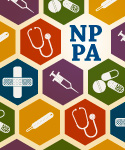June 15th, 2017
Educating Patients About HPV Vaccination Can Feel Like Peddling Snake Oil
Elizabeth Donahue, RN, MSN, NP-C
Messaging and medicine have always gone hand in hand. A Google search for wellness products of yesteryear produces a vibrant collection of ads for lotions and potions. Cod liver oil, hair tonics, and other extracts (including opium!) were promised to keep you feeling healthy and looking great. And using medical professionals to bolster product claims has long been popular in […]
April 21st, 2017
Brainstorm: Are Subarachnoid Hemorrhages Affected by the Weather?
Harrison Reed, PA-C
When I walked into the ICU and stared at the roster of current patients, my jaw hit the floor. “Ho-lee cow,” I said as I scanned the list of diagnoses. The entire unit was full of patients with hemorrhages in their skulls. “Yeah, man.” The physician finishing the previous night’s shift leaned back in his chair. “Didn’t […]
April 10th, 2017
Pulmonary Embolus: Evaluating the Five Ps of PE
Alexandra Godfrey, BSc PT, MS PA-C
Years ago, my physician father said to me; “If something does not make sense, if you struggle to determine the pathology, consider pulmonary embolus (PE).” More recently, an ER physician colleague offered me the following advice: “If you think about PE, test for it.” Of course, an astute clinician places both pieces of wisdom into context. I am not going to look […]
November 2nd, 2016
Intracranial Aneurysms for the Non-Neurosurgical Provider: Primer Series (Part 2)
Bianca Belcher, MPH, PA-C
In Part 2 of this primer series on intracranial aneurysms for non-neurosurgical providers, I will discuss modifiable and non-modifiable patient risk factors for subarachnoid hemorrhage (SAH) during intracranial aneurysm treatment. Modifiable Risks: Hypertension (HTN)[1] Patients with mild-moderate HTN (defined by systolic blood pressure of 130-169 mmHg) have a hazard risk (HR) of 2.3 for SAH compared with patients with […]
October 12th, 2016
Intracranial Aneurysms for the Non-Neurosurgical Provider: Primer Series (Part 1)
Bianca Belcher, MPH, PA-C
Intracranial aneurysms are unnerving, but not all aneurysms are created equally. It’s no secret that nearly 50% of people with intracranial aneurysm ruptures die before they get to the hospital, and of the 50% who make it to the hospital, about 30% die despite our best efforts. Our office often gets urgent referrals from non-neurosurgical […]
March 2nd, 2016
Think Outside the Scale
Scott Cuyjet, RN, MSN, FNP-C
Consider the following case: An 18-year-old female patient with a body-mass index (BMI) of 43 and no other health issues is referred for gastric sleeve surgery. She has tried multiple diets in conjunction with being moderately active and at best has paused or slowed her weight gain. Her parents and one sibling are not overweight, but […]
February 10th, 2016
What Did You Expect?
Harrison Reed, PA-C
One night in the early 1960s, psychology researcher Robert Rosenthal snuck into his own laboratory. He crept along rows of cages filled with albino rats and assigned each animal a designation: this rat is smart; this rat is dumb. But, along with these labels, he sowed deceit. The rats all came from the same scientific supply […]
December 2nd, 2015
A Melange of Medications
Charity Maniates, MSPA, MPH, PA-C
It’s unavoidable — treating the frail, confused, 80 year-old patient with congestive heart failure, atrial fibrillation, type 2 diabetes mellitus and chronic kidney disease in your office, emergency department, or hospital ward. In geriatrics, often acute presentations are the result of harmful medical interactions, resulting in falls, toxicity, delirium, or acute kidney injury. Over time, many […]

